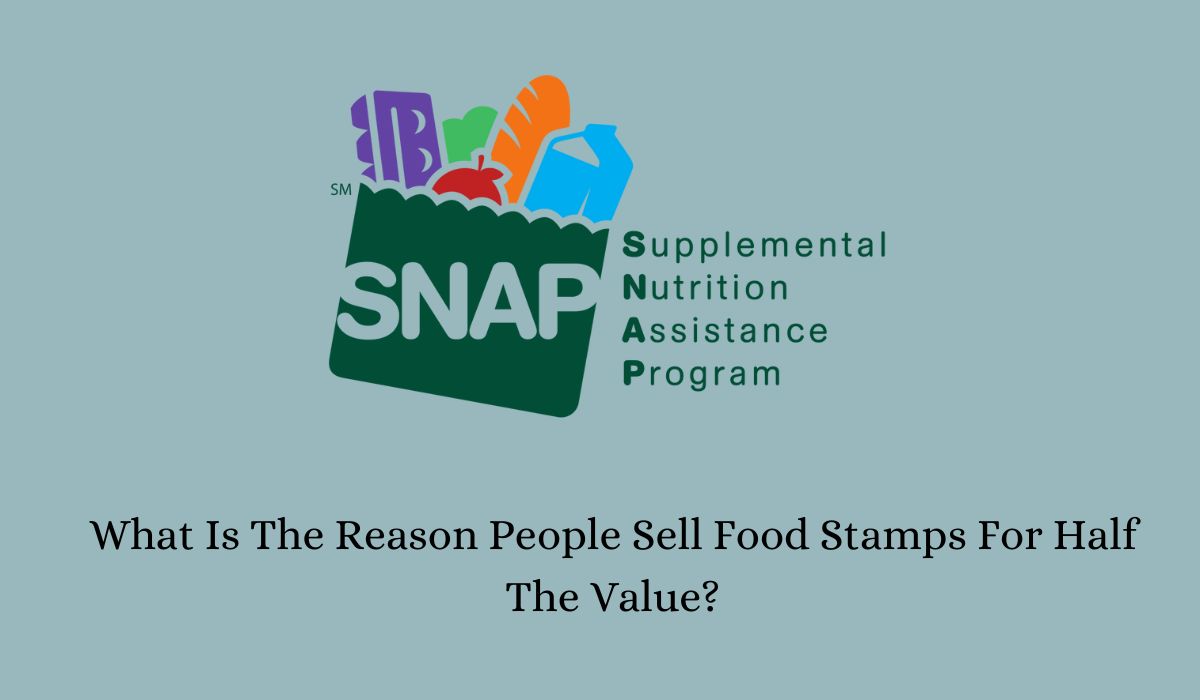Food stamp assistance programs have been implemented in many developed countries to support low-income individuals and families who struggle to afford nutritious food. In the United States, this program is known as the Supplemental Nutrition Assistance Program (SNAP), commonly referred to as “food stamps.”
While these food stamps are intended to help those in need, it is no secret that some people sell their food stamps for half the value. This raises questions about why individuals would choose to do so and what drives this behavior.
Economic Desperation and Immediate Cash Needs
The primary reason people sell their food stamps at a discounted rate is economic desperation. Many SNAP recipients face financial hardships that extend beyond food insecurity.
They may need immediate cash to pay for necessities that SNAP benefits don’t cover, such as housing, utilities, transportation, or medical expenses.
Selling food stamps becomes a way to address urgent financial needs, even if it means losing out on the full value of the benefits.
Lack of Access to Banking and Financial Services
Another factor is the lack of access to traditional banking and financial services among some SNAP recipients. Without a bank account or credit, these individuals cannot easily convert SNAP benefits into cash for other expenses. The informal market for selling food stamps provides a workaround, albeit at a significant loss.
Restrictions and Limitations of SNAP Benefits
SNAP benefits come with restrictions; they can only be used to purchase specific food items. This limitation can be problematic for those who need to allocate their limited resources to non-food essentials. By selling their benefits, recipients can reallocate funds to meet other critical needs.
The Role of Exploitation and Coercion
In some cases, the sale of food stamps at half their value involves exploitation or coercion. Vulnerable individuals, such as those with addiction issues or in abusive situations, may be pressured to sell their benefits for quick cash.
This aspect of the phenomenon highlights a darker side, where the most disadvantaged are further marginalized.
Impact on the SNAP Program and Policy Implications
This trend of selling food stamps has significant implications for the SNAP program. It indicates gaps in the social safety net, suggesting that SNAP benefits alone are insufficient for some recipients.
Policymakers need to consider these realities when designing and implementing social welfare programs. Enhancing SNAP benefits, expanding eligibility for other forms of assistance, or providing more comprehensive support could address the root causes of this issue.
Furthermore, addressing the underlying issues that lead individuals to sell their food stamps can have a broader impact on society. By providing more comprehensive support and resources for those in need, we can work towards reducing economic desperation and exploitation.
Conclusion
While selling food stamps for half the value may seem like a simple transaction, it is often driven by complex factors and can have significant implications.
Economic desperation, lack of access to financial services, restrictions on SNAP benefits, and exploitation all play a role in this phenomenon.
By addressing these underlying issues and improving social welfare programs, we can work towards creating a more equitable and secure society for all individuals.
So, the next time you see someone selling their food stamps, remember that there is more to the story than meets the eye.
